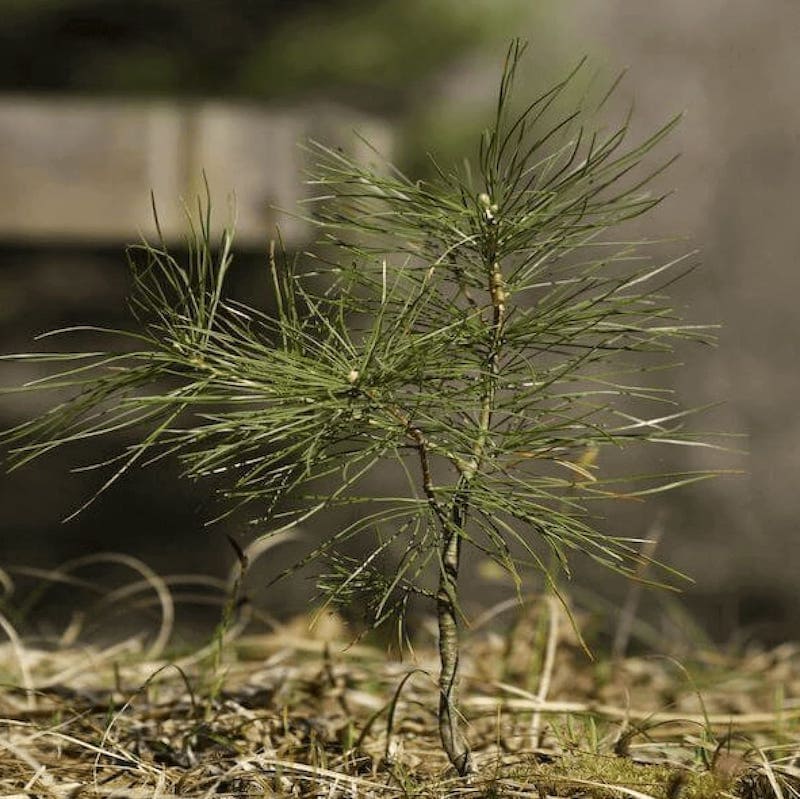Reforestation, Restoring The World's Forests With Tall Tree Seedlings
Restoring the world’s forests through the act of planting trees is known as reforestation. Reforestation can take many forms including the planting of tree plugs by tree planters on land cleared of trees by commercial logging or fire. Unfortunately, more than half of these tree plants die the first winter because of underdeveloped root systems.
Planting Tall Tree Seedlings To Create An Instant Forest
Planting tall tree seedlings not only creates an instant forest where there was none before but increases transplant survivability by 90% due to the fact that their root systems are fully developed. On average, the root of a plug seedling is about half the height of the tree comprising only a few strands of root. By comparison, tall tree seedlings root stems are a couple of feet long made up of hundreds of root strands. This means that our tall tree seedlings will take to the surround soil before winter sets in.
Creating instant forests transplanting tall tree seedlings is revolutionizing the wprold's reforestation industry, giving investors faster retunes on their timber investments, increasing tax incentives for logging companies to replant harvested forests, reviving damaged ecosystems the first year after transplant, sequestering meaningful amounts of carbon at first leaf and stabilizing undulating terrain to prevent erosion.
Hire Us As A Reforestation Consultant
Hire us to consult on your reforestation project. Wherever you are in the world, we can help you plan and design your reforestation project and choose the appropriate tree species to achieve your goals.
Hire Us To Build A Tall Tree Nursery
You can also hire us to design and plan a tall tree nursery, which can be shipped anywhere in world and assembled on site. Training is included.
Hire Us To Plant The Trees
Hire us by contract to plant the trees. We will travel to you site, use our proprietary forest drones to lay out the site guided by tree species selected for end use and topography.
Afforestation Is Not Reforestation
Although both afforestation and reforestation involve the planting of trees, afforestation establishes forests on non-forested lands like grasslands, deserts, or urban areas that have not grown trees the last 100 years or more.
Afforestation is chosen when certain criteria need to be met such as created a managed commercial timber plantation, rewilding or introduction or re-introduction of an ecosystem and like reforestation, afforestation captures carbon from the atmosphere to mitigate the adverse effects of climate change.
Conservation Through Reforestation
Beyond the planting of trees, reforesting lands conserves essential elements of the environment including indigenous soil, water, flora, and fauna.
- Soil Conservation: Reforestation helps stabilize the soil, which at best is just a few inches deep and can be easily washed away by flooding caused by heavy or sustained rainfall.
- Water Conservation: Reforestation holds the water table together at the tree roots to nourish not only the trees, but the flora and fauna interspersed throughout the forest.
- Conservation Of Biodiversity: Reforestation reestablishes migrated ecosystems that previously populated the land conserving the diversity that one existed there.
Other benefits of both reforestation and afforestation include job creation, and an opportunity to marry the growing of trees with agriculture – Agroforestry.
Reforestation Strategies
We employ various reforestation strategies to effectively reforest cleared or fallow lands. Some of these include:
- Planting Native Indigenous Tree Species: Choosing to plant indigenous tree species that are native to the soil and climate increases the likelihood of successful forest regeneration and the establishment of generational biodiversity.
- Planting Mixed Forests: Planting a wide variety of tree species together in a reforestation project, mimics a naturally diverse forest able to ward of insect infestations and disease.
- Natural Regeneration: A properly structured reforestation or afforestation project will be designed for the natural regeneration of trees from seed in the understory of the forest canopy. Second generation trees can be let to grow and eventually replace a first-generation timber harvest or be harvested and transported to another reforestation project site for planting.
- Agroforestry: Growing food and trees together is always an option for any tree planting project given the current state of the world’s food supply and dwindling water resource issues. Growing trees and food together also provides both short term and long-term economic benefits.
Global Reforestation Initiatives
Many countries and organizations around the world recognize the importance of reforestation and have launched large-scale initiatives to restore forests and combat climate change. Some notable examples include:
- A Billion Trees: Launched by the United Nations in 2006, the Billion Trees For The Planet initiative encourages governments, organizations, and individuals to plant and conserve trees worldwide.
- The REDD Program: The Reducing Emissions from Deforestation and Forest Degradation program is an international initiative that aims to financially incentivize developing countries to conserve and restore their forests, reduce carbon emissions, and promote sustainable development.
- The Bonn Challenge: Established in 2011 in Germany, the Bonn Challenge is a global effort to restore 150 million hectares of deforested and degraded land by 350 million hectares by 2030.
- The Great Green Wall: This African-led initiative aims to create a 5,000-mile-long mosaic of trees from ocean to ocean, across the entire width of Africa.
How You Can Contribute to Reforestation
You can play a role in promoting reforestation and supporting the health of our planet's ecosystems by planting trees on your property, donating to organizations like ours working on reforestation initiatives around the world, or advocate for change.
Support reforestation projects: Donate to organizations working on reforestation initiatives or consider supporting businesses that contribute to reforestation through their products or practices.






